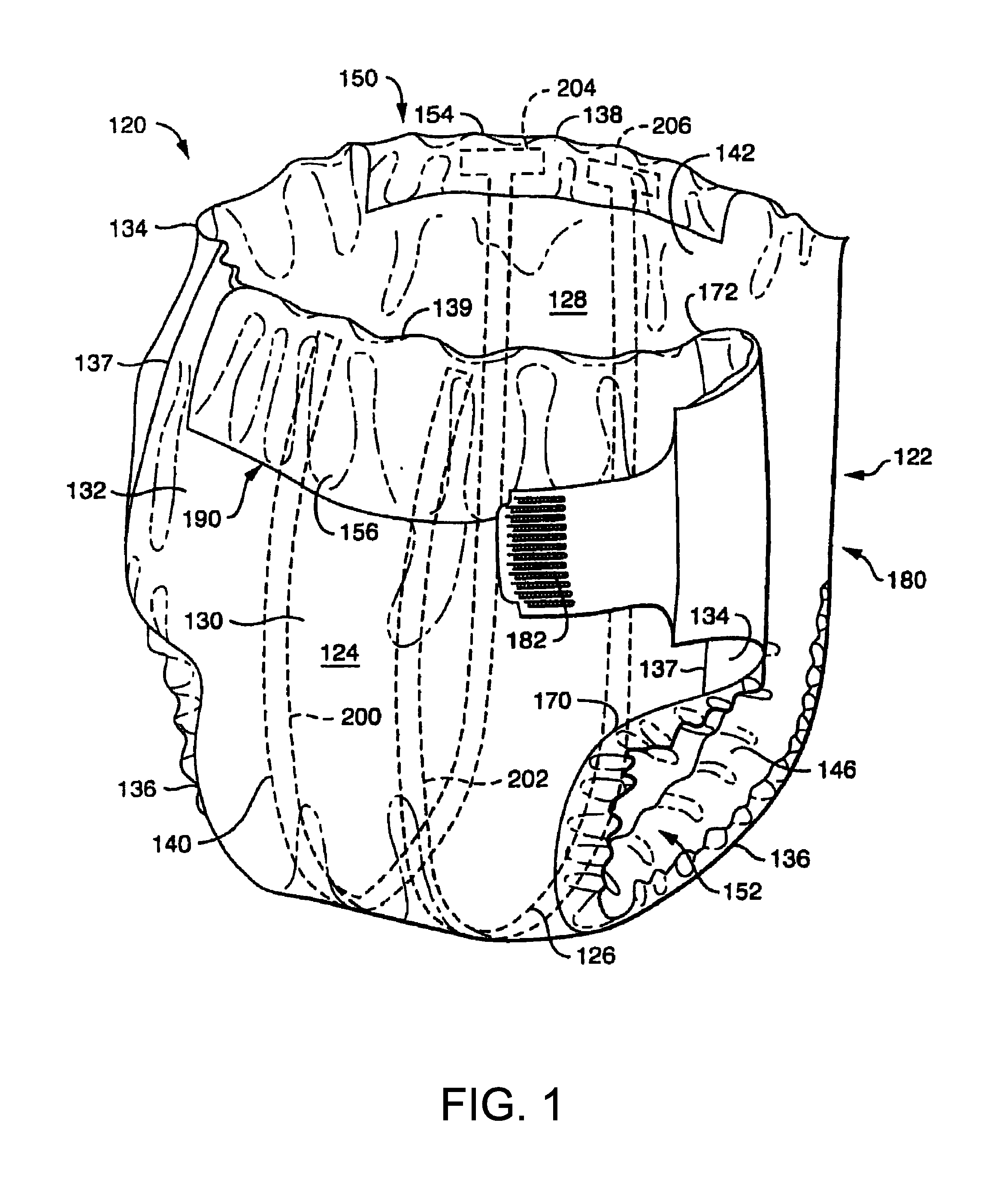Aqueous medium-sensitive coating compositions for triggered release of active ingredients and visual indication for wetness
a technology of active ingredients and coating compositions, applied in the field of wetness indicators, can solve the problems of wearers or caregivers not being able to appreciate the need for a product change, easy to become saturated, and wearers or caregivers not being able to realize the product has been soiled
- Summary
- Abstract
- Description
- Claims
- Application Information
AI Technical Summary
Benefits of technology
Problems solved by technology
Method used
Image
Examples
example 1
Without Betaine Ester Functional Active
[0084]A butanone solution was prepared which contained 20% acetate butyratecellulose (binder), 1% crystal violet lactone (leuco dye), 12% zinc salicylate (developer), 10% Pluronic P 85 of BASF (wettability agent), 5% sodium decadnoic sulfate (surfactant) and 1% eugenol (not betaine ester). The solution was brushed on a polypropylene outer cover film material and air-dried. The eugenol scent was readily detected continuously by a human nose when approaching the film. The eugenol smell was detected by normal inhalation through the human nose (from the same distance) for about four days under ambient conditions. After four days, little eugenol smell was detected by a human nose, even after wetting. A spike of eugenol smell was detected when a freshly prepared film sample (no more than 24 hours old) was wetted by water. At the same time, the film color went from blue to colorless when wetted.
example 2
[0085]A butanone solution was prepared which contained 20% acetate butyratecellulose, 1% crystal violet lactone, 12% zinc salicylate, 10% Pluronic P 85, 5% sodium decadnoic sulfate and 1% eugenol betaine ester. The solution was brushed on a polypropylene outer cover film and air-dried. No smell of eugenol was detected by human nose when approaching the film. When wetted, eugenol smell was readily detected by a human nose. The sample was allowed to remain under ambient conditions for two months; eugenol smell was readily detected by a human nose upon being wetted by water. At the same time, the film color went from blue to colorless after being wetted.
example 3
Example Using Color Changing pH Indicator Dye
[0086]A solution was made by dissolving 10 mg bromocresol green (pH dye), 100 mg citric acid (pH adjuster), 50 mg polyacrylic acid (pH adjuster), 30 mg benzethenium chloride (wettability enhancing agent) and 300 ml nitrocellulose-based varnish (binder) from Sunchemical Co. in 500 microliters ethanol. 20 mg betaine ester of menthol dissolved in 100 microliters ethanol was added to the solution and mixed well. The solution was brushed on a piece of polypropylene film to form a thin coating and air-dried overnight. Smell of menthol was detected when the coating was wetted with water. The color of the coating changes from yellow to blue.
[0087]A wetness indicator containing the multisensory coating composition for detecting the presence of an aqueous-based liquid that has penetrated the absorbent article, is desirably immobilized or printed on one or more layers of an absorbent article. Such wetness indicator coating composition can be positio...
PUM
| Property | Measurement | Unit |
|---|---|---|
| pH | aaaaa | aaaaa |
| thermochromic | aaaaa | aaaaa |
| temperature | aaaaa | aaaaa |
Abstract
Description
Claims
Application Information
 Login to View More
Login to View More - R&D
- Intellectual Property
- Life Sciences
- Materials
- Tech Scout
- Unparalleled Data Quality
- Higher Quality Content
- 60% Fewer Hallucinations
Browse by: Latest US Patents, China's latest patents, Technical Efficacy Thesaurus, Application Domain, Technology Topic, Popular Technical Reports.
© 2025 PatSnap. All rights reserved.Legal|Privacy policy|Modern Slavery Act Transparency Statement|Sitemap|About US| Contact US: help@patsnap.com



